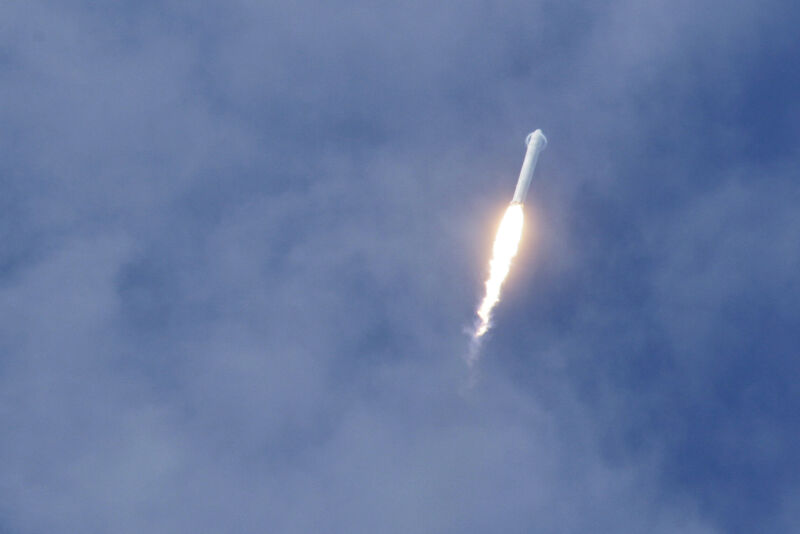
Winds howled across Florida's Space Coast on June 3, 2010, as classic summertime thunderstorms rolled inland off the Atlantic Ocean. The heavens opened up, and torrential rainfall doused some parts of Cape Canaveral with as much as three inches of rain in a single hour.
The storms seemed an ill portent for the very first Falcon 9 rocket, which the SpaceX launch team had moved to the company’s new pad only a day before. After completing a succession of static fire and fueling tests during the spring of 2010, SpaceX finally received approval to launch from the Air Force, with the earliest possible date of June 4.
The stakes were high. In the previous four years, SpaceX had attempted five launches of its much smaller Falcon 1 rocket from a tropical island; three of those launches failed. Now the upstart company had been granted access to America’s most storied spaceport, located on Florida's east coast. Carpeted with high-dollar launch pads and myriad rocket facilities, a failure at Cape Canaveral could damage more than SpaceX’s reputation—it could destroy national security assets.
Four tall lightning towers protected the rocket from strikes during the rains, but post-storm checkouts revealed a weak telemetry signal coming from antennas on the Falcon 9 rocket's second stage. Water from the day’s downpour must have gotten into the electronics. This was a potential showstopper for the next day’s launch attempt; it had to be fixed. To do so, the launch director, Tim Buzza, drove out to the launch pad with the company’s founder, Elon Musk, and a senior director of avionics, Bulent Altan.
They arrived at the launch pad well after dark, and the Falcon 9 rocket had already been lowered from its vertical launch position back into a horizontal configuration.
Altan, who knew the avionics system as well as anyone, climbed a ladder to where the antennas were located on the second stage. He removed a cover to assess the damage, confirming that rain from that day's storms had gotten into the rocket's electronics. Overhead, bright lights shone down. Below, dozens of eyes stared up at Altan.
"I've never felt more exposed than that," he said.
He returned to the ground for a quick huddle with Musk, Buzza, and a handful of other engineers. Should they try and swap out electronics on the pad? Did they need to roll the Falcon 9 back into the company's hangar and delay the launch for a couple of days? No and no. The engineers decided to try a low-tech solution—a blow dryer. Altan went back up the ladder, and he began to wave the dryer back and forth until the antennas and their electronics seemed dry.
Meanwhile, on the ground, Musk and the others restlessly waited. SpaceX was barely eight years old at this point, and the company had survived a near-death experience two years earlier before being saved by NASA funding that had enabled this launch. The Falcon 9 rocket on the pad would fly this test flight, and if all went well, the company could soon begin flying cargo to the International Space Station for NASA. But there were a lot of doubters ready to pounce on SpaceX should it fail. They didn't trust Musk or his company to deliver. Critics didn't like what they viewed as a cowboy attitude toward spaceflight.
And let's be real: here they were, cowboying the night before launch, taking a blow dryer to the rocket.
After he finished, Altan closed the electronics compartment on the rocket and applied silicone sealant so that it would survive its ascent into space. Then, with all eyes on him, he climbed back down to the ground. When Altan stepped off the ladder, Musk walked over with a question.
“You think it is good enough to fly tomorrow?”
“It should do the trick."
Musk did not say anything else right away. He has this stare that he uses on people. It's intense, as if to demand, Is that your final answer? In this case, Musk wanted to know whether Altan was giving his boss the answer he wanted to hear or saying what he really meant. And after several seconds, Musk must have liked what he saw.
"OK," he said.
And it was OK. More than OK, in fact. The next day, although the telemetry signal coming from the second stage antennas still was not quite as strong as hoped for, Musk said they should roll with it anyway. At 2:45pm local time on June 4, 2010, the first Falcon 9 rocket blasted off from the Florida coast.

The company’s first goal for the test flight was simple—avoid damaging its launch pad or other valuable facilities at Cape Canaveral. Secondarily, it hoped to reach orbit. It did all of that, and more. With an accuracy remarkable for a brand-new rocket, the second stage inserted itself into orbit at an inclination of 34.494 degrees—just short of its target of 35 degrees.
And so, ten years ago, the Falcon 9 era officially began.
reader comments
553